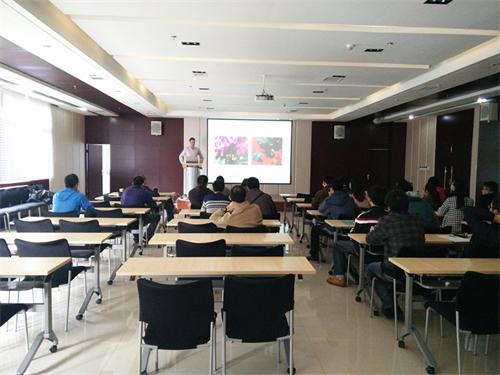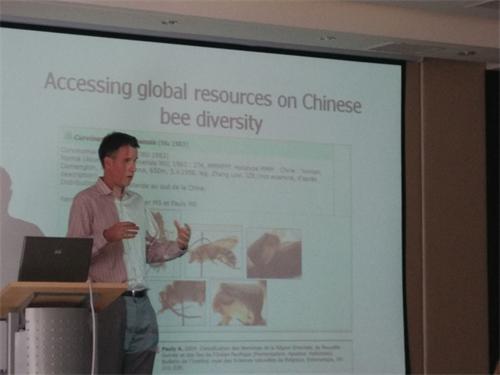At the invitation of PI, Douglas Yu in Ecology, Conservation, & Environment Center, State Key Laboratory of Genetic Resources and Evolution, Kunming Institute of Zoology (KIZ), CAS, Professor John Ascher visited KIZ. During his visit, Prof. Ascher gave a lecture – “Overcoming the taxonomic impediment to study of Asia’s bee pollinators: examples from Singapore and prospects for China” -- to the students and teachers of KIZ on October 15th.
Prof. Ascher is a world expert on the systematics and taxonomy of bees and allied groups, and he was previously at the American Museum of Natural History in New York, where he compiled the first comprehensive world and regional databases of bees. The bee fauna of China is very poorly known (but easily outnumbering the species richness of the US, which has 4000 species). Bees are economically important and are threatened worldwide, especially in countries with industrial agriculture, like China. Prof. Ascher’s visit also gives us the opportunity to link our bee collections with his efforts to organise the Asian bees.
Pollinators of the exceedingly rich Asian flora remain poorly known, due in part to the great difficulty of identifying Asian bees. Prof. Ascher’s lecture began with examples of field and museum research on bees and then introduced associated resources designed to facilitate these studies, in particular new online biodiversity portals featuring specimen records, dynamic identification keys, image databases, and global maps. Examples from Singapore illustrated how difficult taxonomic problems can be resolved with an integrative taxonomic approach, incorporating both traditional morphological and scholarly study, new molecular techniques such as Next-gen DNA barcoding and population genomics. Advancing bee taxonomy was presented not as an end in itself, but rather as a long overdue first step towards documenting new species interactions. Characteristics of the Chinese bee fauna and that of Yunnan in particular then was presented. Finally, prospects for resolving the severe taxonomic impediments to study of Chinese bees was discussed, involving scaling up of collaborations that have proven effective at smaller geographic scales.


(By Chun-Ying Wu)
